How To Track Your Marketing Campaign ROI

To prove the value of your work and build a solid relationship with your client or stakeholder, you need to measure and report your marketing return on investment (ROI).
But how do you measure ROI effectively with so many things on your plate? This article explores how you can track campaign ROI for pay-per-click (PPC), email marketing, and social media campaigns and how you can take back your valuable time with automated reporting.
What is campaign ROI, and why should you track it?
Campaign ROI tracks a marketing channel's total revenue against its production costs to measure its contributions toward a business's bottom line. It's one fundamental way a company evaluates the effectiveness of a marketing campaign or agency.
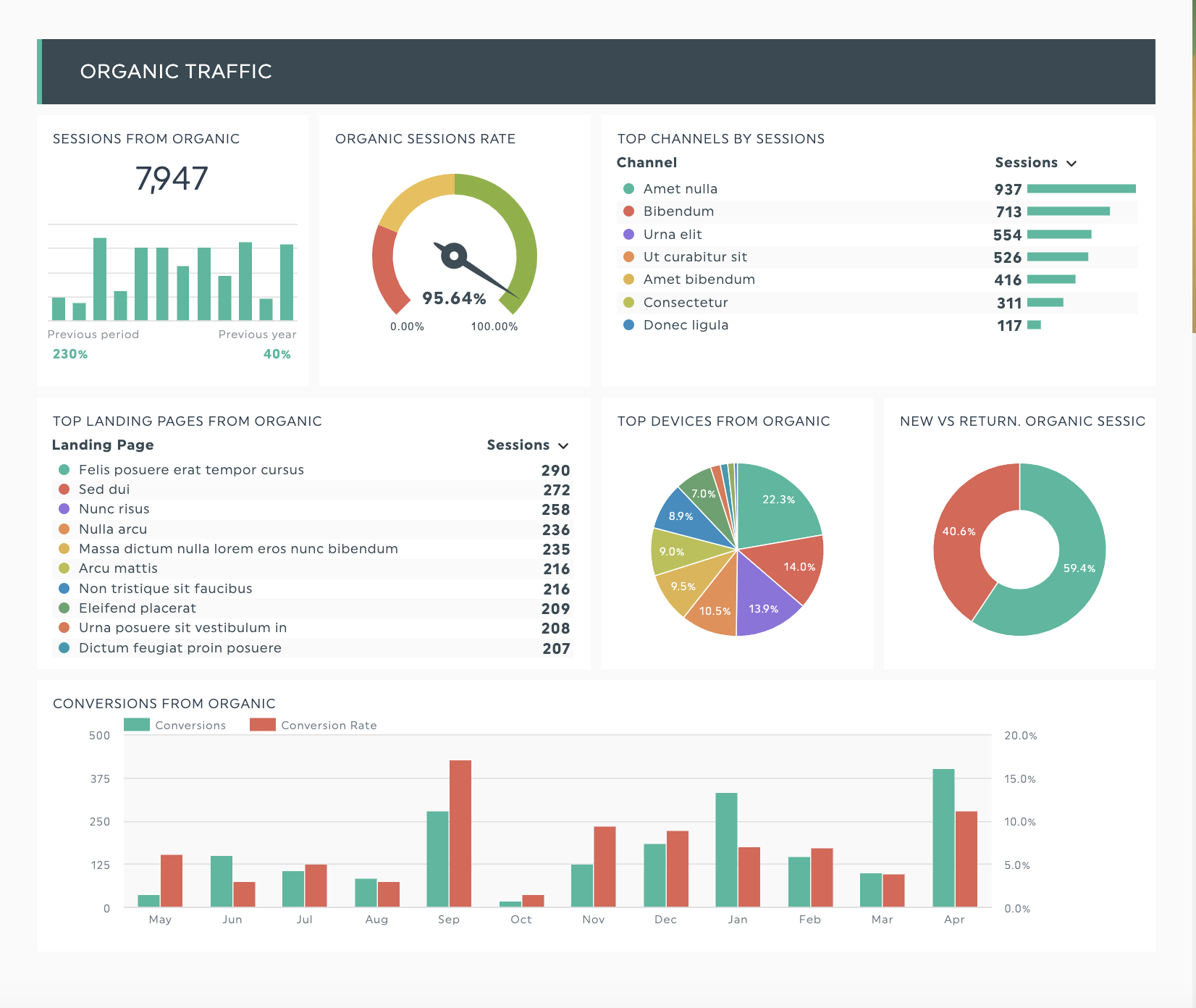
A dashboard measuring SEO campaign performance in DashThis. Get this report with your own data!
Measuring campaign ROI involves a few steps:
- Define your campaign goals
- Identify metrics to measure the ROI of your marketing activities
- Track your overall marketing costs, including platform costs, ad spend, and other labor costs
- Set up the right tools and processes like attribution, UTM codes, and conversion tracking to measure ROI
Once you’ve got those, use the marketing ROI formula: Total revenue - marketing expenses/marketing expenses.
Why is monitoring campaign ROI vital to any marketing team’s job? Let’s dive into three reasons.
Justify marketing spend and make informed decisions
Part of effective and persuasive client reporting is the ability to use data to support a client's recommendation or to build a case for a marketing budget. To justify marketing spend, you must link your marketing efforts to overall business performance metrics like sales, revenue, and ROI.
It’s easier to make strategic decisions when you know your marketing expenses to calculate the actual profits of each campaign. Weekly reporting and campaign ROI tracking keeps your marketing team accountable for campaign profit margins.
Identify marketing efforts contributing to business ROI
It’s easy to think of the customer journey as a linear funnel, where people progress from awareness to decision-making in a neat, linear fashion.
But that’s no longer the case. Today’s customer journey is non-linear, with consumers taking six or more actions before buying a product that’s new to them. That means it’s rare that new customers convert or purchase directly when they see an ad or a piece of content.
In addition to tracking direct ROI metrics like conversions, the number of leads generated, click-through rates, and direct sales, consider tracking indirect ROI metrics to understand how your marketing efforts influence a future purchase. That way, you’ll get a complete picture of your top marketing campaigns’ impact on short-term and future purchases.
Optimize future digital campaigns
What can I do to improve a marketing campaign with a negative ROI? Which ad messaging variant does my target audience prefer?

Tracking your campaign ROI and comparing your KPIs across marketing channels to identify your most effective channels makes it easier to answer challenging questions like these. This dashboard, for instance, allows you to compare your Google Ads and Facebook ads performance across different KPIs and campaigns.
Expert tips on tracking campaign ROI
To track campaign ROI, you need to know where visitors are coming from and what content they clicked on to get there. Set up conversion tracking for each marketing channel and UTM parameters to connect channel activity to conversions or business revenue.
Besides accurate tracking, we asked experienced marketers which metrics they used to track campaign success for email marketing, social media campaigns, and PPC ads. Here’s what they said.
Top KPIs to track email marketing ROI
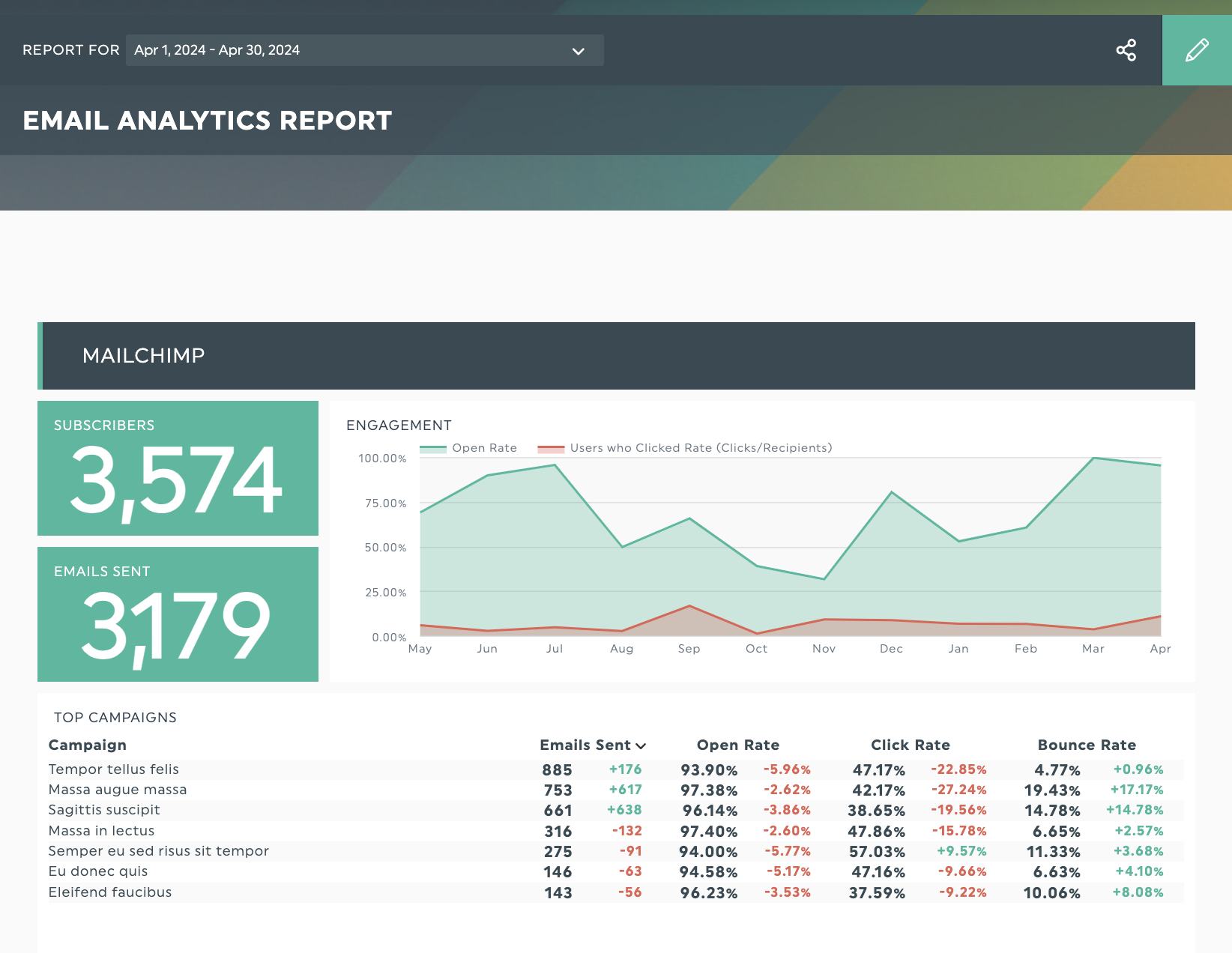 Get this email marketing report with your own data!
Get this email marketing report with your own data!
Gianluca Ferruggia of DesignRush tracks short—and long-term ROI, which helps him understand how email influences immediate and future purchases. He says, "Direct ROI should be the immediate revenue generated from each channel, such as a direct purchase or conversion after an email open or click."
Gianluca continues: “Indirect ROI involves long-term benefits: increased website traffic, improved brand recognition, and influence on potential clients that may transform into sales down the line.”
Similarly, Adil Farooq of Silverstone Technologies tracks open, click-through, and conversion rates to help him segment audiences and tailor email content for maximum engagement and conversions. He also measures how effectively his newsletters drive brand awareness through subscriber surveys or tracking website traffic post-launch.
Don’t discount email marketing’s effectiveness as a branding and content marketing channel in your marketing ROI calculations. Digital marketer Kartik Ahuja says, “If our newsletter encourages consumers to discuss us or interact with our brand more, that's a win, even if it doesn’t show up as direct sales.”
(i) Recommended email marketing software analytics
You’ll need a CRM and email marketing platform like Mailchimp, Campaign Monitor, or HubSpot (which integrates natively with DashThis!) to understand who’s purchased and completed a conversion action after receiving an email.
Top KPIs to track social media campaign ROI
Adil also takes a long-term view to tracking social media campaign ROI. “Organic social media is a brand awareness powerhouse. Besides key metrics like website traffic from social media, engagement and brand mentions, we use brand sentiment analysis tools to understand how social media perception impacts brand value. This provides us with invaluable insights for long-term strategy.”
Vaibhav Kakkar of Digital Web Solutions adds: “For indirect ROI, we monitor changes in follower count, engagement rates, and mentions/shares, which indicate brand awareness and customer engagement levels. Tools like Social Mention and Brand24 give us deeper insights into how social media affects brand perception in real time.”
(i) Recommended platform insights and analytics tools
Each social media platform includes native analytics to measure engagement, brand mentions, and reach. You can get even more insights with social listening tools like Hootsuite and Sprout Social to track social media conversations around your brand. Tip: Import data from these tools into DashThis by uploading a CSV file and creating a report!
Top KPIs to measure PPC campaign ROI
Sean Clough of Harmony Lab uses Google Analytics and Google Ads to monitor their PPC campaigns' click-through rates (CTR), conversion rates, and cost per acquisition (CPA).
He explains, "By tracking and tagging properly, we can attribute sales and lead generation directly to specific PPC campaigns and keywords. This data allows us to optimize our campaigns, focusing on the best-performing keywords and ad groups while minimizing wasted spend.”
Besides direct ROI metrics, consider tracking the impact of PPC campaigns on indirect metrics. To track the effects of PPC campaigns on brand awareness, Marc Bishop of Wytlabs reviews metrics like total impressions, click-through rate (CTR), and cost per thousand impressions (CPM).
He adds: “We use lift tests to measure the increase in brand search volume during and after the campaign periods, which helps us to gauge the brand awareness impact generated by our PPC efforts. This method allows us to understand not only direct sales impact but also how much our PPC campaigns influence brand visibility and engagement.”
(i) Recommended platform insights and analytics tools
Jason Hennessey of Hennessey Digital shares how they identify how PPC campaigns influence repeat business in Google Analytics: "We employ CRM systems and custom tracking codes alongside a Google Analytics setup." Within GA, we use the Multi-Channel Funnel reports to analyze repeat customers. This involves examining the visual overview of conversion sources to identify how PPC campaigns influence repeat business.
Elaborating further, Jason continues: “We isolate Google Ads data in the Assisted Conversions Report to understand the contributions of PPC campaigns to assisted conversions leading to membership renewals. We also get insights from exploring the Top Conversions Path Report, which provides specific traffic segments leading to membership renewals attributed to PPC campaigns.”
Simplify your campaign reporting with DashThis
Are you crunching numbers and creating data visualizations more than delivering good marketing ROI?
You’re not alone. Time spent on reporting tasks has increased by 57% over the last ten years, according to a PHD study. With campaigns spanning multiple channels, analyzing data and making informed decisions are more difficult when your data isn’t in one place.
That’s where reporting automation like DashThis comes into play to simplify the campaign reporting process. With its 34+ integrations, DashThis is a one-stop shop for analyzing your data and calculating campaign ROI across all your marketing efforts—whether you’re reporting on the short-term results of your marketing activities or giving a longer-term view on sales growth over time.
Save hours on client reporting with this advertising campaign report template
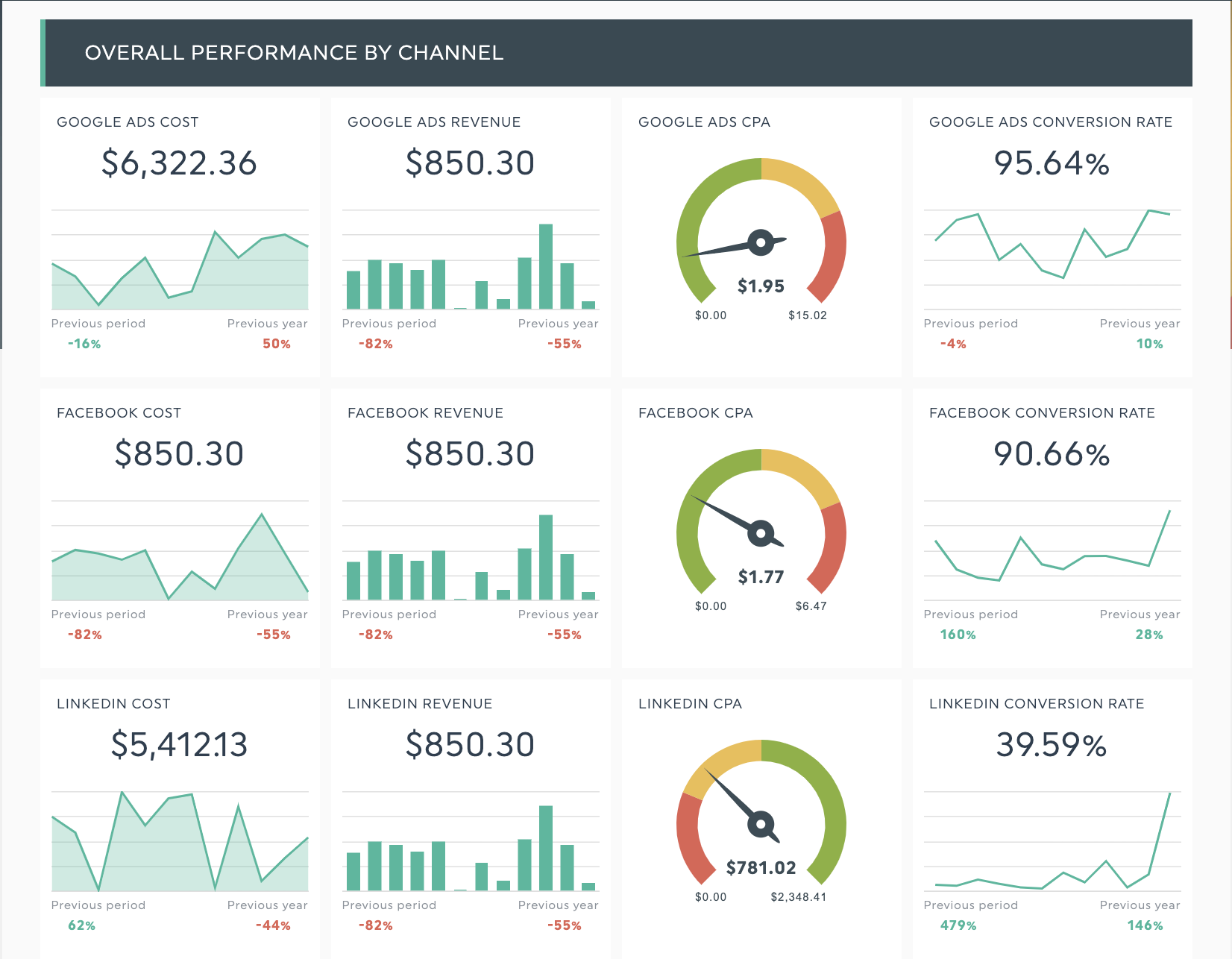
Get this advertising campaign report template with your own data!
With our campaign ROI report template, you can save hours per month and prevent data overload. Specially designed for multi-channel campaigns, this template provides multiple visualizations and customizable reporting options, making it easy to analyze data and accurately identify trends and patterns whether you’re working with a small business or a larger enterprise.
How to automatically create a campaign ROI report in DashThis
Now that you understand the benefits of automated campaign ROI reporting let’s learn how to create and schedule a report with DashThis.
Step 1: Select a template
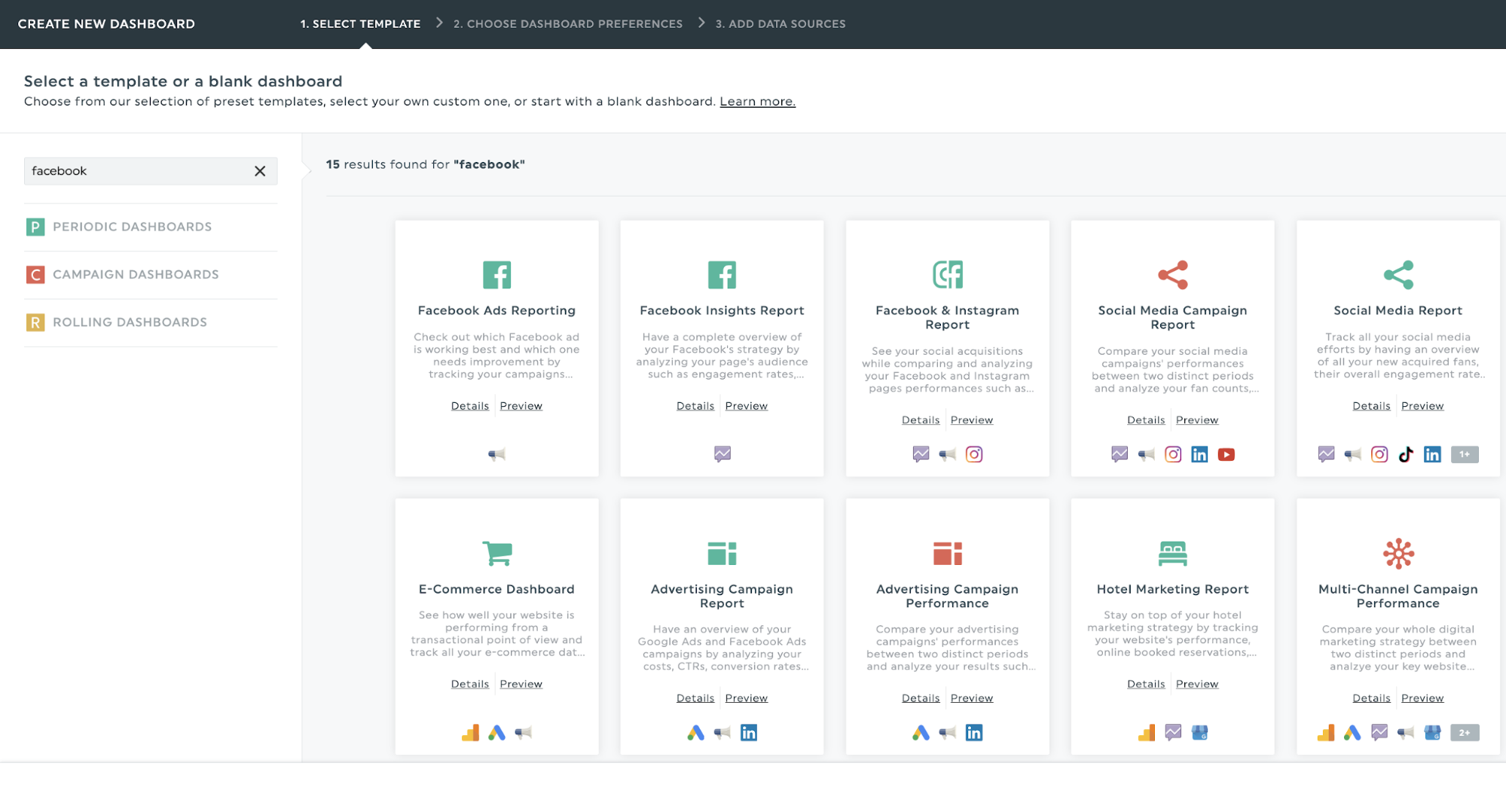
You can start with one of DashThis’s dashboard templates or use our advertising campaign report template to create a new dashboard from scratch.
Step 2: Connect your marketing data sources
Depending on each API, you need permissions to connect these integrations. Once you’ve given the necessary permissions, you’ll automatically import your campaign data into your DashThis account for easier consolidation.
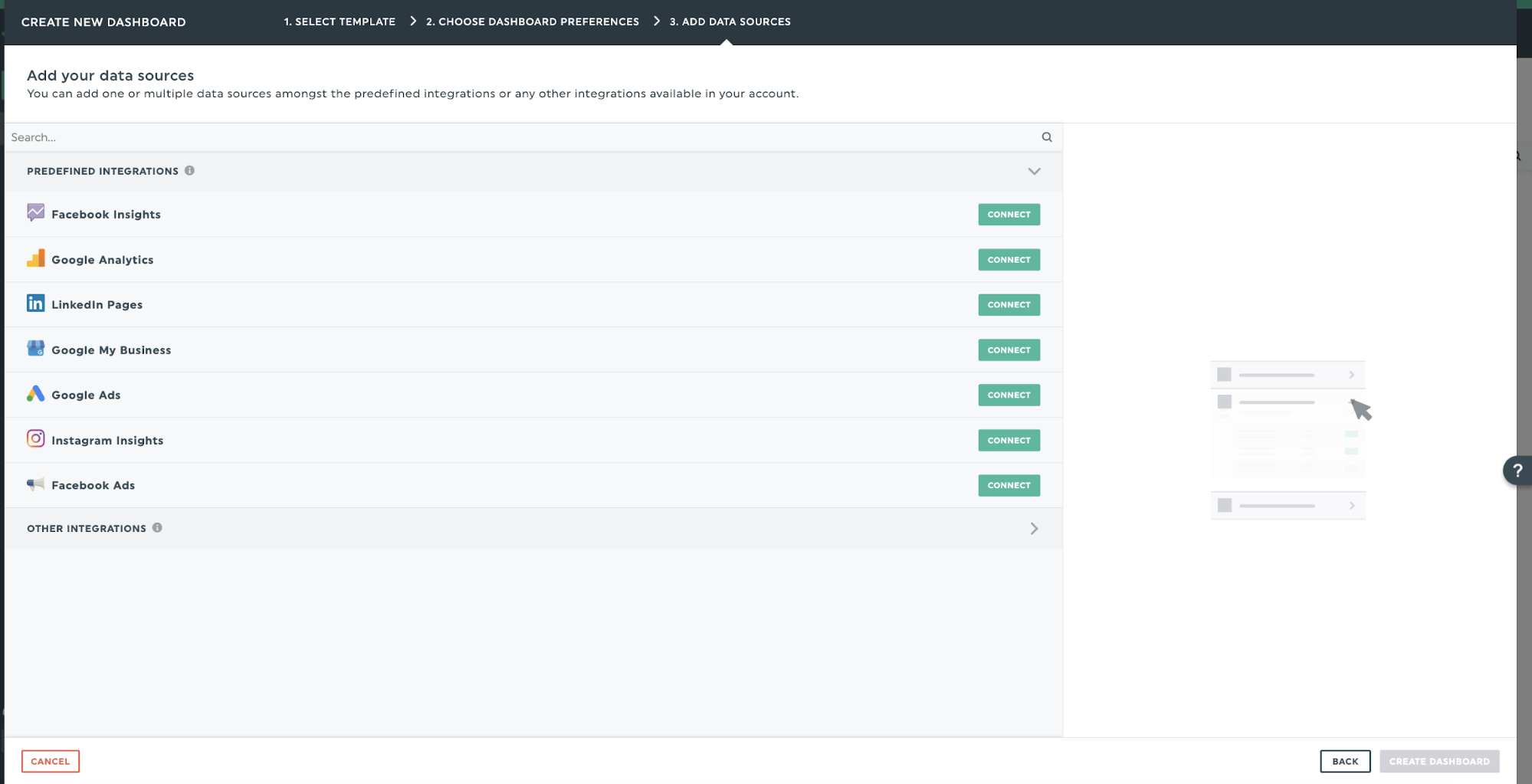
Step 3: Choose relevant metrics and customize your report layout
DashThis’s drag-and-drop interface makes choosing the metrics you’re reporting on easy. Use headers and sections to organize your widgets into a logical, easy-to-follow flow for your client or stakeholder to review.
For example, if you’re creating a social media report, you can group metrics according to channels like LinkedIn, YouTube, and TikTok to make your report easier to follow.
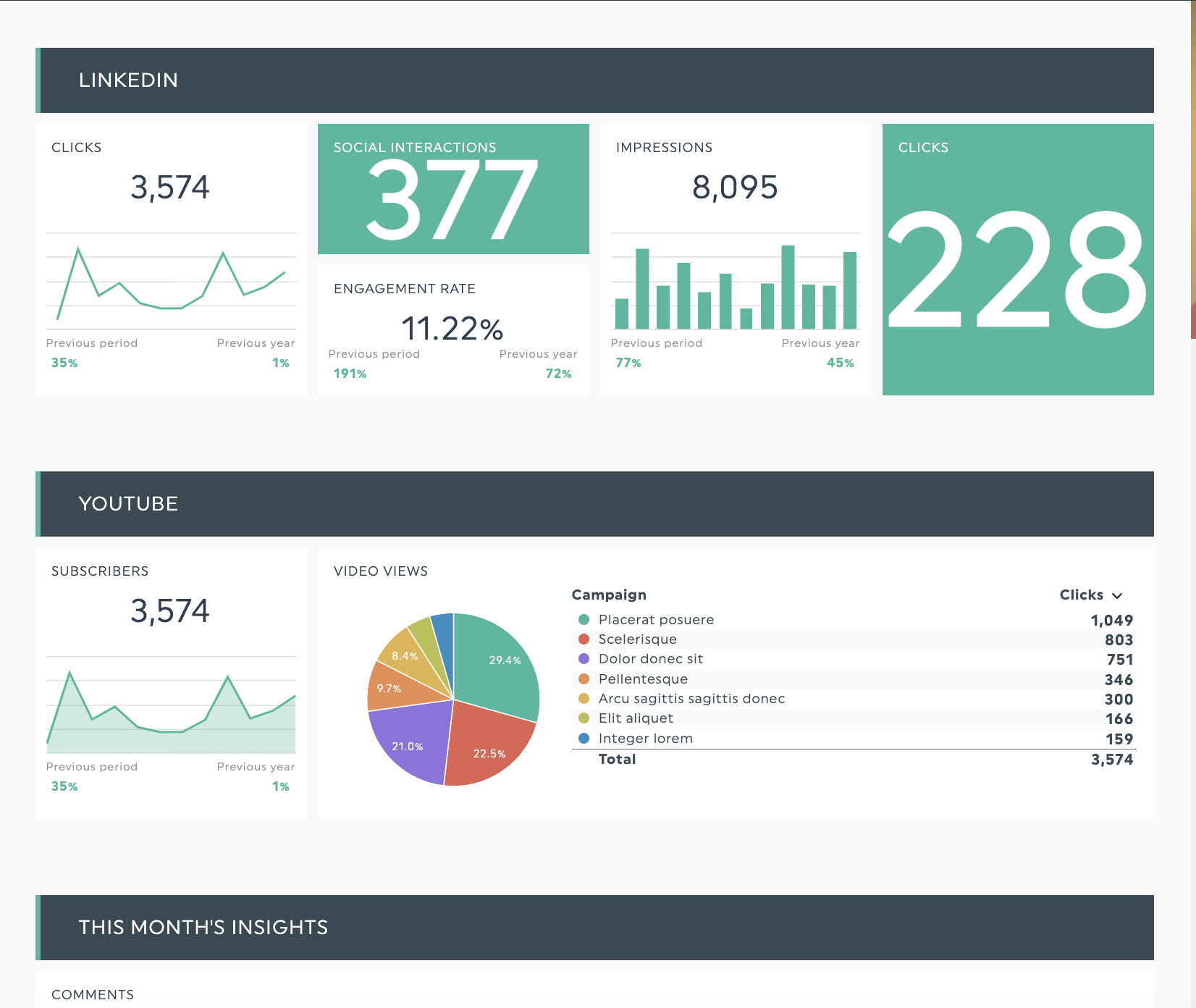
Get this social media report template with your own data!
Step 4: Schedule automatic report updates to your clients
Once you’re happy with the way your report looks, use DashThis’s reporting scheduling options to save even more time and take one thing off your to-do list. Click Sharing Options > Share by Email > Frequency to schedule your reports.
This automatic email dispatch feature lets you set it once, daily, weekly, monthly, or quarterly. DashThis will automatically schedule and send the report according to your chosen time frame.
Alternatively, you can download your report as a PDF or share a URL link so clients can view it online in real time—perfect if you’re preparing for an in-person or video conferencing meeting.
Automate your campaign reporting with DashThis
Accurate reporting is essential to nurture client relationships and show the value of your work.But if we’re honest, there are better things you can do with your time.
Each report might only take an hour to put together in Excel. But the time spent on manual reporting adds up over time, and that’s time you could have spent optimizing your bid adjustments or coming up with creative content ideas.
Take back your valuable time with report automation. Sign up for your free 15-day trial of DashThis today.
Ready to start tracking your campaign ROI?
Read More
Don’t miss out!
Automate your reports!
Bring all your marketing data into one automated report.
Try dashthis for free

